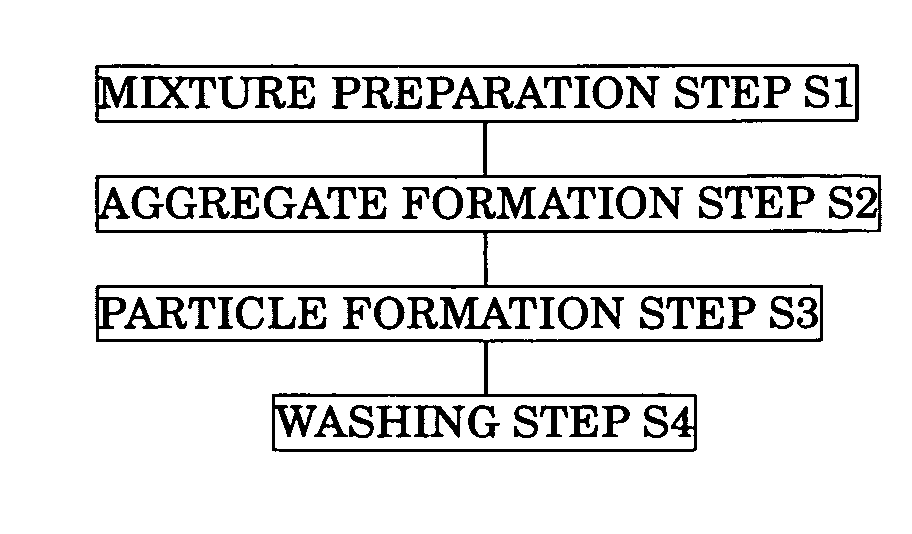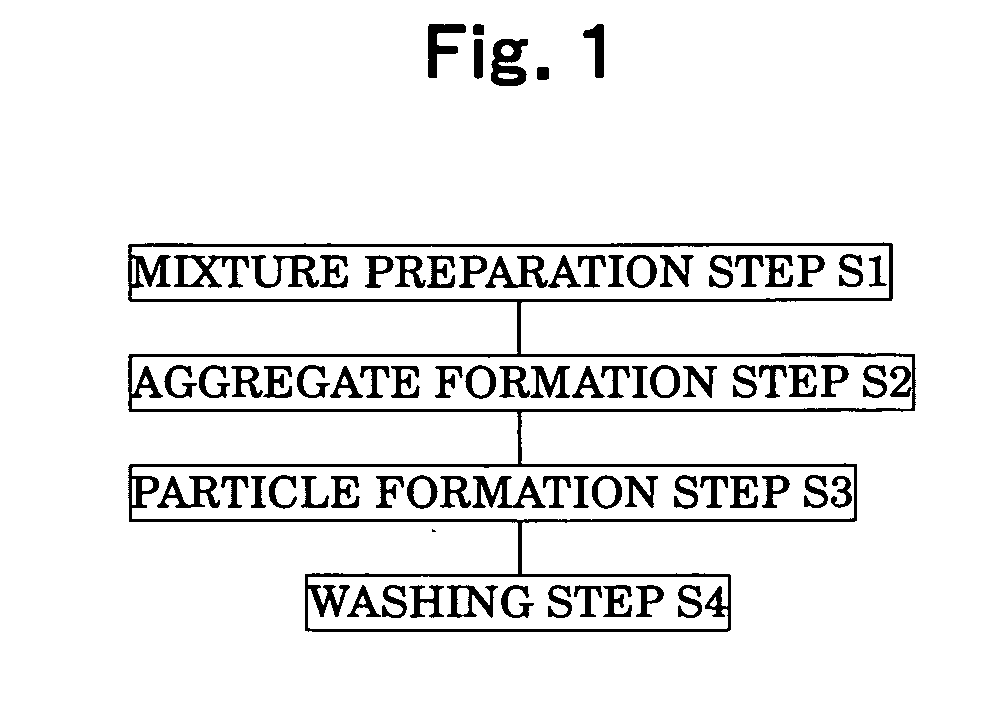Toner for electrostatic image development and process for preparing the same
a technology for electrostatic images and toners, applied in the field of toner for electrostatic image development, can solve the problems of reducing product cost, increasing energy and time, and reducing yield, and achieves the effects of improving toner properties, improving toner yield, and improving product quality
- Summary
- Abstract
- Description
- Claims
- Application Information
AI Technical Summary
Benefits of technology
Problems solved by technology
Method used
Image
Examples
example 1
(Mixture Preparation Step)
[0110] The aqueous pigment dispersion 2 (containing the pigment magenta 1), the aqueous copolymer polyester resin dispersion 2, and the aqueous wax fine particle dispersion were mixed together at solid matter concentrations (% by weight) in Table 2 to obtain a mixture.
(Aggregate Formation Step)
[0111] While the obtained mixture was stirred at 500 rpm by a Max Blend stirrer, an aqueous solution of 0.1% by weight of magnesium chloride as a flocculant was dropwise added to the mixture in a 30 parts by weight to 100 parts by weight of polyester resin solid matter weight ratio and after that, the mixture was stirred for 1 hour. Accordingly, aggregates of a toner were formed in the water medium. Next, the aqueous copolymer polyester resin dispersion 1 was added at a solid matter concentration (% by weight) in Table 2 and an aqueous solution of 0.02% by weight of magnesium chloride was dropwise added in a 150 parts by weight to 100 parts by weight of polyester...
example 2
[0117] The same procedure as in Example 1 was followed except that the aqueous pigment dispersion 1 containing the pigment cyan and the aqueous copolymer polyester resin dispersion 3 at respective solid matter concentrations (% by weight) in Table 2 were used instead of the aqueous pigment dispersion 2 containing the pigment magenta 1 and the aqueous copolymer polyester resin dispersion 2 and that the aqueous HCl solution used in the washing step was adjusted to pH 3 instead of pH 2 and the aggregates of the toner were washed with this aqueous HCl solution twice instead of once. Thus, a cyan toner of Example 2 was obtained.
example 3
[0118] The same procedure as in Example 1 was followed except that the aqueous pigment dispersion 3 containing the pigment yellow and the aqueous copolymer polyester resin dispersion 4 at respective solid matter concentrations (% by weight) in Table 2 were used instead of the aqueous pigment dispersion 2 containing the pigment magenta 1 and the aqueous copolymer polyester resin dispersion 2 and that respective solid matter concentrations (% by weight) of the aqueous copolymer polyester resin dispersion 1 was changed as shown in Table 2. Thus, a yellow toner of Example 3 was obtained.
PUM
| Property | Measurement | Unit |
|---|---|---|
| glass transition temperature | aaaaa | aaaaa |
| particle diameter | aaaaa | aaaaa |
| particle diameter | aaaaa | aaaaa |
Abstract
Description
Claims
Application Information
 Login to View More
Login to View More - R&D
- Intellectual Property
- Life Sciences
- Materials
- Tech Scout
- Unparalleled Data Quality
- Higher Quality Content
- 60% Fewer Hallucinations
Browse by: Latest US Patents, China's latest patents, Technical Efficacy Thesaurus, Application Domain, Technology Topic, Popular Technical Reports.
© 2025 PatSnap. All rights reserved.Legal|Privacy policy|Modern Slavery Act Transparency Statement|Sitemap|About US| Contact US: help@patsnap.com


